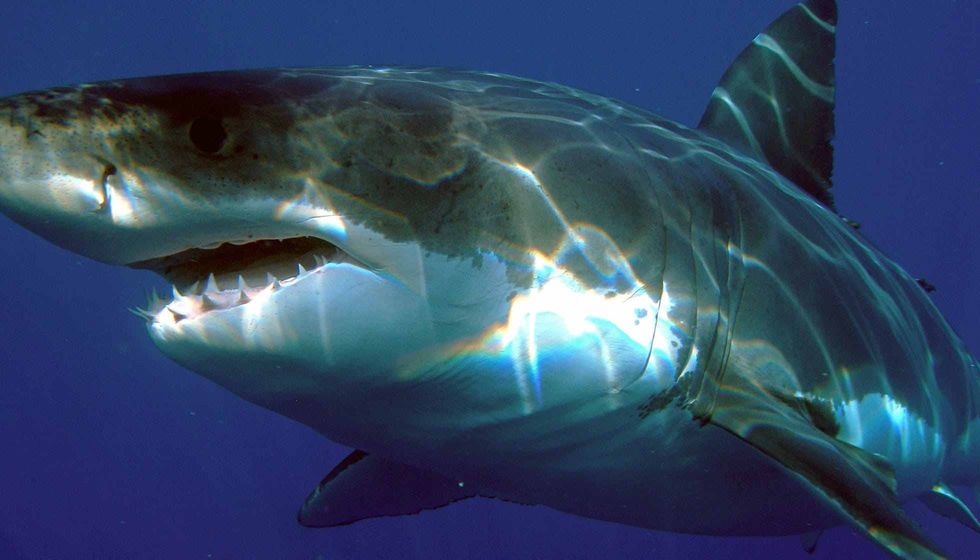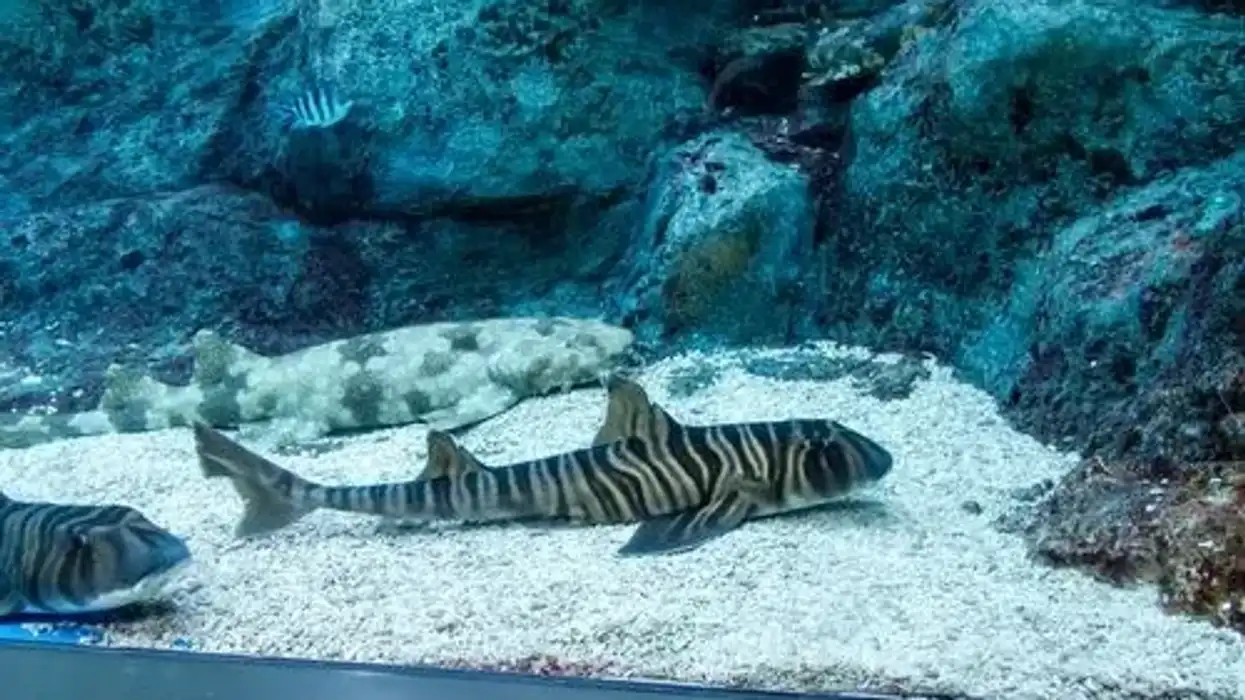Porbeagle shark (species Nasus) is one of the most popular shark species but is now an endangered species. The exact quantum of porbeagle populations in different oceans is not known.
In scientifc terms, they are known as 'porbeagle Lamna nasus'. They primarily live around continental shelves and prefer cold temperature waters.
The length of a porbeagle shark can extend up to 3.5 m. Being an endangered species, there are strict restrictions on hunting porbeagle shark in many countries. The average maturity age for a porbeagle shark is in the range of 8-13 years.
The favorite prey for a porbeagle shark are squid, mackerel, herring, and various other fishes. There are various variations of porbeagle shark that have been named after the regions they are found in such as porbeagle shark Canada, porbeagle shark Ireland, porbeagle shark Newfoundland.
Porbeagle shark (Lamna nasus) has high energy levels which gives them the strength to swim and cover big distances during the migration periods. This also helps them in feeding and reproductions.
They are warm blooded creatures which compels the sharks to maintain a body temperature that is higher than the surrounding water.
Their life span differs based on their size and location, for instance the small south pacific porbeagle sharks have a life expectancy of up to 65 years while the north Atlantic porbeagle sharks live for an average of 46 years.
After reading this article on porbeagle sharks, do check out the interesting information on Caribbean reef shark and drum fish.
Porbeagle Shark Interesting Facts
What type of animal is a porbeagle shark?
The scientific name is Porbeagle Sharks Lamna nasus and it is a species of the Mackerel shark. It falls under the Lamnidae family and is widely found in the cold and temperate marine waters of north Atlantic and southern hemisphere.
They are closely related and look a little similar to salmon sharks in the north Pacific.
Porbeagle Sharks (Lamna nasus) fishing has been banned in many countries due to their endangered status. Porbeagle shark endangered species status is primarily because of human activities for porbeagle shark teeth or increasing craze to try a porbeagle shark recipe.
What class of animal does a porbeagle shark belong to?
The porbeagle shark belongs to the class of cartilaginous fishes. It is a member of the shark family lamnidae which makes it one of the closest living relatives of the great white shark.
However, the porbeagle sharks are not mammals even though they give birth to their offspring. They feed their offspring with the use of mammary glands which makes them fall under the category of fishes.
How many porbeagle sharks are there in the world?
The porbeagle sharks have a long gestation period and are poached and killed for their commercial benefits, which puts them in the bracket of vulnerable to overexploitation and population depletion. Their population is decreasing. The biomass of this shark in the Northwest Atlantic was estimated to be 11-17% of unexploited levels in the year 2000.
Where does a porbeagle shark live?
The steel porbeagle sharks mainly inhabit the Northern Atlantic ocean but can also be found in the Southern Atlantic ocean, the Southern Pacific ocean, the Northern Antarctic ocean and the Southern Indian ocean. They are found in cold to temperate water temperatures and are very versatile. They can be found both close to and far from the shore.
What is a porbeagle shark's habitat?
Porbeagle sharks are large coastal and oceanic sharks. They are comfortable in cold to temperate waters.
They are mainly found in the North Atlantic Ocean but can also be traced in the South Atlantic ocean, South Indian ocean and South Pacific ocean. There is no evidence on porbeagle shark dangerous attitude to humans as not many porbeagle shark attack incidents have been reported.
Who do porbeagle sharks live with?
These sharks are found to live alone as well as in small schools. They are an exception to the sharks characteristics as they are known to exhibit playful behavior. It has been observed that they roll around near the surface and play with random objects. But the porbeagle sharks have also been caught chasing each other.
How long does a porbeagle shark live?
The life expectancy of these sharks is based on their size and the waters they live in. For instance, the smaller south pacific sharks live a little longer as compared to the other porbeagles.
They may live up to 65 years. However, the north Atlantic porbeagles have a shorter life expectancy of up to 46 years. Male porbeagle shark gains maturity at the age of eight years while the females attain maturity at the age of 13 years.
How do they reproduce?
Unlike the bony fishes who shed eggs and sperm in the water, the porbeagle sharks have developed internal fertilization as a mode of reproduction. This means that the porbeagle sharks are ovoviviparous.
The male shark's sexual organ is called a clasper which is located on the pelvic fin. The females reproductive organ is called the cloaca, the male inserts his clasper into the females cloaca, further releasing sperms and fertilizing the eggs.
This process takes place when they swim parallel to each other. The males usually holds the females with his teeth which often leads to bite marks on the female's body. When the female shark reach the age of 18 years, they are ready to undergo the gestation period.
For female porbeagle sharks, the gestation period ranges between 8-10 months after which it gives birth to its pups. The average litter size for porbeagle shark is four pups.
What is their conservation status?
Porbeagle shark is an endangered species and efforts to increase their population are being undertaken in several countries. Hunting of porbeagle shark is banned in various regions. They have been targeted by unsustainable sport fisheries for their meat in new Zealand, UK, US and Ireland.
Porbeagle Shark Fun facts
What do porbeagle sharks look like?
They have a stout body. Their body is streamlined for fast movement. They possess beagle-like hunting abilities. They have distinctive features like a sharp pointed nose with 'S' shaped nostril and a large curved mouth.
They have large and black eyes and are greyish black in color. They have hard skin and small denticles on the surface. There is an evident white patch towards the lower trailing edge of the first dorsal fin.

*We've been unable to source images of Porbeagle Shark and have used images of White sharks instead. If you are able to provide us with a royalty-free image of Porbeagle Shark, we would be happy to credit you. Please contact us at hello@kidadl.com.
How cute are they?
The porbeagle sharks are moderately cute and possess very distinctive features. They are bluish-grey in color and have slightly rough skin with denticles.
How do they communicate?
They are an expert at detecting low frequency and weak electrical signals. They usually detect these with their Lorenzini ampoules. They communicate with their fellow sharks living in the schools either by sight or by arching their body.
How big is a porbeagle shark?
The north Atlantic porbeagle sharks are larger to those in the south pacific. They have an average size of 4.9-6.6 ft. They are similar in size to the salmon shark.
How fast can a porbeagle shark swim?
It can swim very fast as a result of its streamlined body. It has an approximate speed of 20 mph. It is also capable of short sprints at double the pace.
How much does a porbeagle shark weigh?
An adult porbeagle shark weighs around 300 lb (136 kg).
What are their male and female names of the species?
Sharks do not have specific names based on sexes hence Both male and female porbeagle sharks are called 'Lamnidae'.
What would you call a baby porbeagle shark?
A baby porbeagle shark is referred to as a pup.
What do they eat?
They usually prey on squids and have a primary fish based diet which include herring, cod and dogfish,
Are they dangerous?
Porbeagle sharks are not considered dangerous despite their large size. They don't attack swimmers or boats. There have been only three human attacks by them, but none of them were fatal.
Would they make a good pet?
The porbeagle sharks can not be kept as pets as they require a cold to moderate temperature of habitat which cannot be provided in a sociable environment.
Did you know...
Nicknames like bottle-nose and blue dog are given to this shark.
It is believed that their main predators are the great white shark.
They have a third eyelid which is known as the nictitating membrane. This exists to protect their eyelids.
The population of female porbeagle sharks is 30% more than their male counterparts.
Why is the porbeagle shark endangered?
They are mainly vulnerable to overexploitation and population depletion because of their low reproductive capacity. Overfishing also acts as a huge threat as it is mainly done for the huge demand in shark fins. The lack of management of this leads to instability in the shark fisheries.
How many teeth does a porbeagle shark have?
They have very sharp teeth that can cut through like a knife. They are triangular in shape and have as many as 15 rows of teeth in each jaw.
Here at Kidadl, we have carefully created lots of interesting family-friendly animal facts for everyone to discover! Learn more about some other mammals including pumpkinseed sunfish, or longhorn cowfish.
You can even occupy yourself at home by drawing one on our Porbeagle shark coloring pages.









